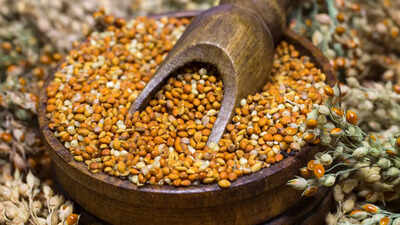ARTICLE AD BOX

Scientists dig up how diet changed and transformed society during the Bronze Age.
People these days are swapping wheat with a more nutritious grain - millet. But this isn’t just another modern health trend. Millets have been a staple in the diet for centuries. A recent study has found that millet was already revolutionizing diets as far as the Bronze Age.
People from the Tumulus culture, the ones who lived in Central Europe during the Middle Bronze Age, were believed to be mostly pastoralists. However, a recent study has challenged this long-held belief and given insight into the shifts seen around 1500 BC, including lifestyle changes in Central European history. The findings of the bioarchaeological investigation of the Bronze Age cemetery of Tiszafüred-Majoroshalom, led by an international research team, are published in the journal Scientific Reports. Around 1500 BC, there were radical changes in people’s lives: they ate and lived differently, and the social system was also reorganized. How diet changed Nitrogen isotope studies show that during the Middle Bronze Age, people had a more diverse diet, and social differences were clear, especially in who had access to animal protein. By the Late Bronze Age, these differences faded, and diets became more uniform but less nutritious.
Broomcorn millet was introduced
The carbon isotope analyses found that people consumed millet. As the plant can be grown quickly and has a high energy content, it became quite a popular option towards the beginning of the Late Bronze Age. Yes, that’s right. Millets are no modern trend; they have been part of our diets for centuries. The data from the Tiszafüred Bronze Age cemetery indicate the earliest known consumption of millet in Europe.
Stay ready with these 7 essential medical gadgets as COVID cases rise
Nutritional value of millets
Millets have numerous health benefits.
Grown in India, Nigeria, and other Asian and African countries, the small round grains are gluten-free and have high amounts of protein, fiber, and antioxidants.One cup (174 grams) of cooked millet contains:
- Calories: 207
- Carbs: 41 grams
- Fiber: 2.2 grams
- Protein: 6 grams
- Fat: 1.7 grams
- Phosphorus: 25% of the Daily Value (DV)
- Magnesium: 19% of the DV
- Folate: 8% of the DV
- Iron: 6% of the DV
How diet changed social relationsSocial relationships changed during the Late Bronze Age. People stopped living in long-established, tightly organized tell-settlements and instead lived in smaller, more spread-out communities. This shift led to a looser and less structured social system, which also showed up in their diets. The analysis of the teeth and isotope tests revealed that people ate much less animal protein than before. This goes against the earlier belief that the Tumulus culture mainly focused on animal husbandry.Millets are today opted for their nutritional value and also as a gluten-free option, especially for those with gluten intolerance.



.png)
.png)
.png)
















 15 hours ago
5
15 hours ago
5










 English (US) ·
English (US) ·